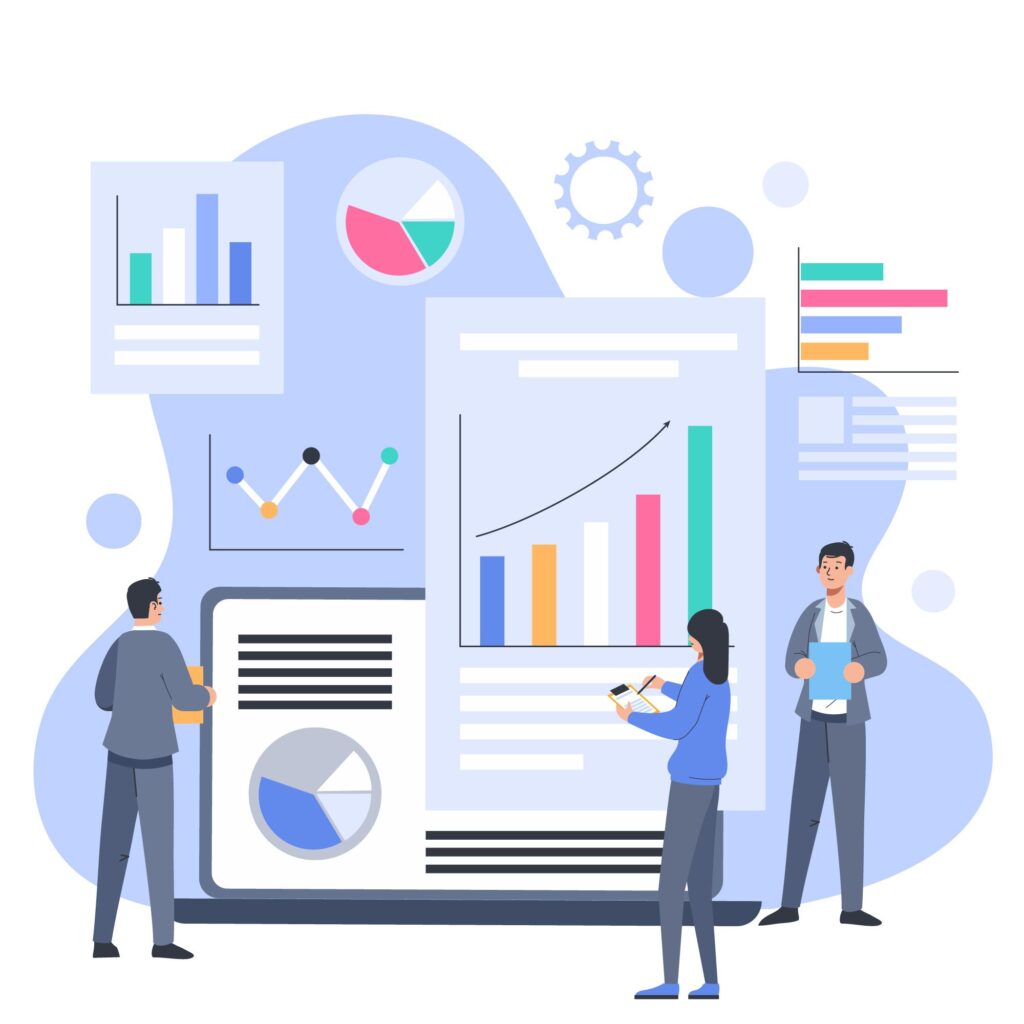Every single day, we create billions of gigabytes of data through social media posts, online shopping, videos we watch, or even GPS routes we follow. But raw data by itself is just a huge, messy pile that doesn’t mean much.
That’s where Data analytics frameworks come in. Think of them like librarians who organize a messy library. They help businesses, schools, hospitals, and even sports teams understand data, make smarter choices, and solve real problems.

Real Impact of Data Analytics
Today, in the digital age, data isn’t just a bunch of numbers in Excel it’s one of the most valuable things a company owns. But here’s the problem: if data isn’t organized or processed properly, it creates confusion instead of helping.
That’s why data analytics frameworks are important. They’re not just complicated theories in books they’re practical methods tested in real life. These frameworks help teams make sense of messy data and turn it into real business value.
Why Do Data Analytics Frameworks Matter?
Imagine walking into a room stacked with random papers everywhere. Your task is to find patterns and give a report by the end of the day. Without a system, you’d be lost.
That’s exactly how data feels without a framework. A data analytics framework is like a guide or blueprint that helps turn messy information into clear insights and those insights into actions that actually help.
Frameworks help organizations:
- Focus on what really matters in business
- Avoid misunderstandings about data
- Work better across different teams
- Make smart, evidence based decisions
Frameworks provide clarity, especially when teams are faced with enormous or unknown data sets. They provide a structure that takes individual data points and gives them a clear cut direction.
The Pillars of a Strong Analytics Framework
No matter the size of the company, most frameworks follow a simple cycle:
- Identify the problem – What question are we trying to answer?
- Collect data – Gather clean and reliable information.
- Prepare data – Organize and clean it so it’s ready for analysis.
- Analyze findings – Use tools to find patterns and trends.
- Take action – Turn insights into real decisions or changes.
It’s not about making things complicated. It’s about making data clear and useful.
Real-World Impact of Data Analytics Frameworks
Let’s break down some clear examples of how they’re making a difference:

1. Healthcare – Saving Lives
Hospitals now use analytics to predict which patients are at higher risk of diseases. Frameworks process millions of medical records to find patterns doctors may miss. For example:
- Predicting heart attack risks by analyzing lifestyle, age, and health history.
- Helping pharmaceutical companies discover new drugs faster.
- Improving hospital management by tracking patient needs in real time.
Impact: Faster diagnosis, better treatments, and ultimately, saved lives.
2. Education – Personalized Learning
Schools are using data analytics frameworks to track student progress. Instead of one size fits all teaching, data helps teachers spot students who need extra support or advanced challenges.
- Online learning platforms recommend lessons based on student performance.
- Schools use dashboards to see attendance, grades, and learning gaps.
Impact: Students get more personalized education, making learning fairer and more effective.
3. Business – Smarter Decisions
Every business, from small shops to global brands, uses data frameworks to understand customers.
- E-commerce websites like Amazon analyze buying habits to suggest products.
- Banks detect fraud by spotting unusual transactions.
- Marketing teams check which ads work best to avoid wasting money.
Impact: Companies grow smarter, avoid risks, and offer customers what they really want.
4. Sports – Winning Strategy
Analytics isn’t just for classrooms and offices, it’s in the field too. Sports teams now use data to:
- Track player performance (speed, energy, accuracy).
- Prevent injuries by predicting fatigue.
- Plan winning strategies based on opponent weaknesses.
Impact: Fairer competition, exciting games, and healthier athletes.
5. Government – Smarter Cities
Cities are becoming “smart” thanks to analytics frameworks. Data from traffic cameras, public transport, and energy use is analyzed to:
- Reduce traffic jams with better signal timings.
- Improve waste management routes.
- Monitor pollution levels in real time.
Impact: Cleaner, safer, and more efficient cities.
6. Environment – Protecting Our Planet
Frameworks help scientists study climate change, track endangered animals, and measure pollution.
- Satellite data is analyzed to predict natural disasters like floods and wildfires.
- Farmers use analytics to manage water and fertilizer more effectively.
Impact: Protecting nature, improving farming, and fighting climate change.
How Frameworks Make It All Happen
To keep it simple, here’s the process most frameworks follow:
- Collect data – From apps, websites, sensors, or surveys.
- Store data – In databases or cloud platforms.
- Clean data – Removing errors, duplicates, and irrelevant information.
- Analyze data – Using algorithms, AI, or visualization tools.
- Present results – With charts, dashboards, or reports.
- Take action – Businesses, schools, or governments make smarter choices.
Challenges and Concerns
While the impact is positive, there are also concerns:
- Privacy: Who owns the data? How is it being used?
- Bias: If the data is incomplete, the results may be unfair.
- Complexity: Not everyone has the skills to use these frameworks.
This is why ethics, rules, and transparency are just as important as the technology itself.
Future of Data Analytics Frameworks
The future looks even brighter. With the rise of Artificial Intelligence (AI) and Machine Learning (ML), frameworks will get smarter. They’ll be able to:
- Predict diseases earlier.
- Create fully personalized learning paths for students.
- Build cities that run more smoothly with minimal waste.
- Help businesses innovate faster.
Conclusion
Data analytics frameworks aren’t just technical tools, they’re the silent game changers shaping our everyday lives. From hospitals saving lives to schools personalizing learning, from smarter businesses to greener cities, their impact is everywhere.
As technology continues to evolve with AI and machine learning, these frameworks will only grow more powerful, helping us predict, prevent, and progress faster than ever before.